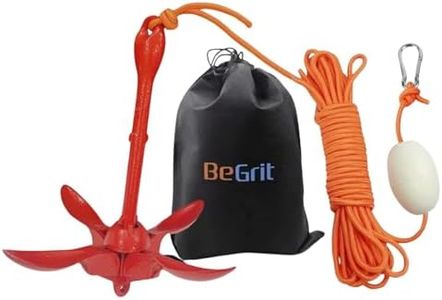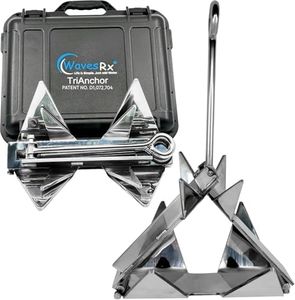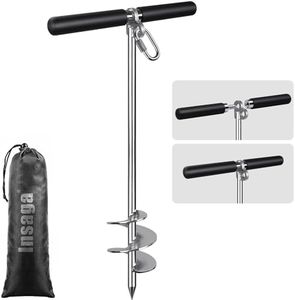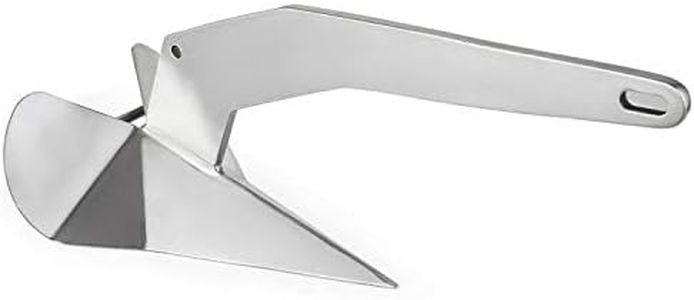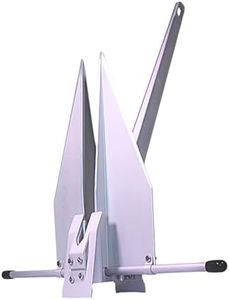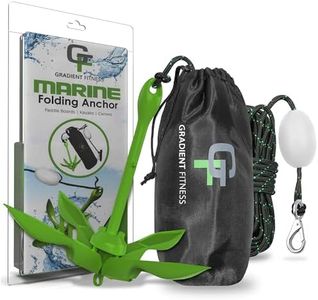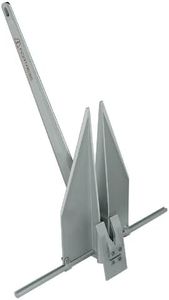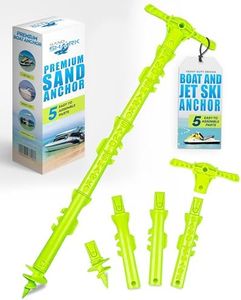We Use CookiesWe use cookies to enhance the security, performance,
functionality and for analytical and promotional activities. By continuing to browse this site you
are agreeing to our privacy policy
10 Best Boat Anchors
From leading brands and best sellers available on the web.By clicking on a link to a third party's website, log data is shared with that third party.
Buying Guide for the Best Boat Anchors
Choosing the right boat anchor means making sure your boat stays safely in place under a variety of water, weather, and bottom conditions. The anchor you select should match your boating environment and the size and type of your boat. Understanding the key specifications behind boat anchors will help you make a confident, informed choice for your time on the water.Anchor TypeThe type of anchor describes its shape and style, like fluke, plow, or mushroom. This matters because each design works best in certain bottom conditions—sand, mud, rock, or weed. Fluke anchors hold well in sand and mud, plow anchors are versatile for changing bottoms, and mushroom anchors are suited for calm, soft lake beds or for small, light boats. To choose, think about the places you'll anchor most often: knowing the typical bottom type where you go boating will guide you toward the right anchor style.
Anchor WeightAnchor weight is how heavy the anchor is, usually shown in pounds or kilograms. It's important because a heavier anchor can generally hold a larger or heavier boat, but it also needs to be practical enough for you to use and store on your boat. Most anchor types have guidelines that link boat length to recommended anchor weight. To pick the right weight, check your boat’s length and typical load, and remember that too light might not hold, while too heavy can become difficult to handle.
Holding PowerHolding power is a measure of how much force (usually in pounds or kilograms) an anchor can withstand before slipping. It’s different from just weight—the design and shape make a difference. This spec matters because a good holding power keeps your boat safe in wind and current. You can think of it as an anchor’s ability to 'grip' the bottom. Compare recommended holding power values for your boat’s size and expected conditions: for calm lakes, less is needed, and for open water or strong currents, more is better.
MaterialBoat anchors are made from materials like galvanized steel, stainless steel, or aluminum. This is important for strength, corrosion resistance, and weight. Galvanized steel is strong and affordable, stainless steel resists rust and looks nicer, while aluminum is lightweight for easy handling. If you boat in saltwater, choose a material that resists corrosion best. Match your choice to durability needs and how easy you want handling and maintenance to be.
Shank LengthThe shank is the long part of the anchor that connects to your boat’s anchor line. Shank length matters because a longer shank often helps the anchor dig deeper into the bottom, which can increase holding power, especially in soft mud or sand. For most casual boaters, a standard shank works well, but if you’re anchoring in unpredictable or soft bottoms, a longer shank can be a big advantage.


